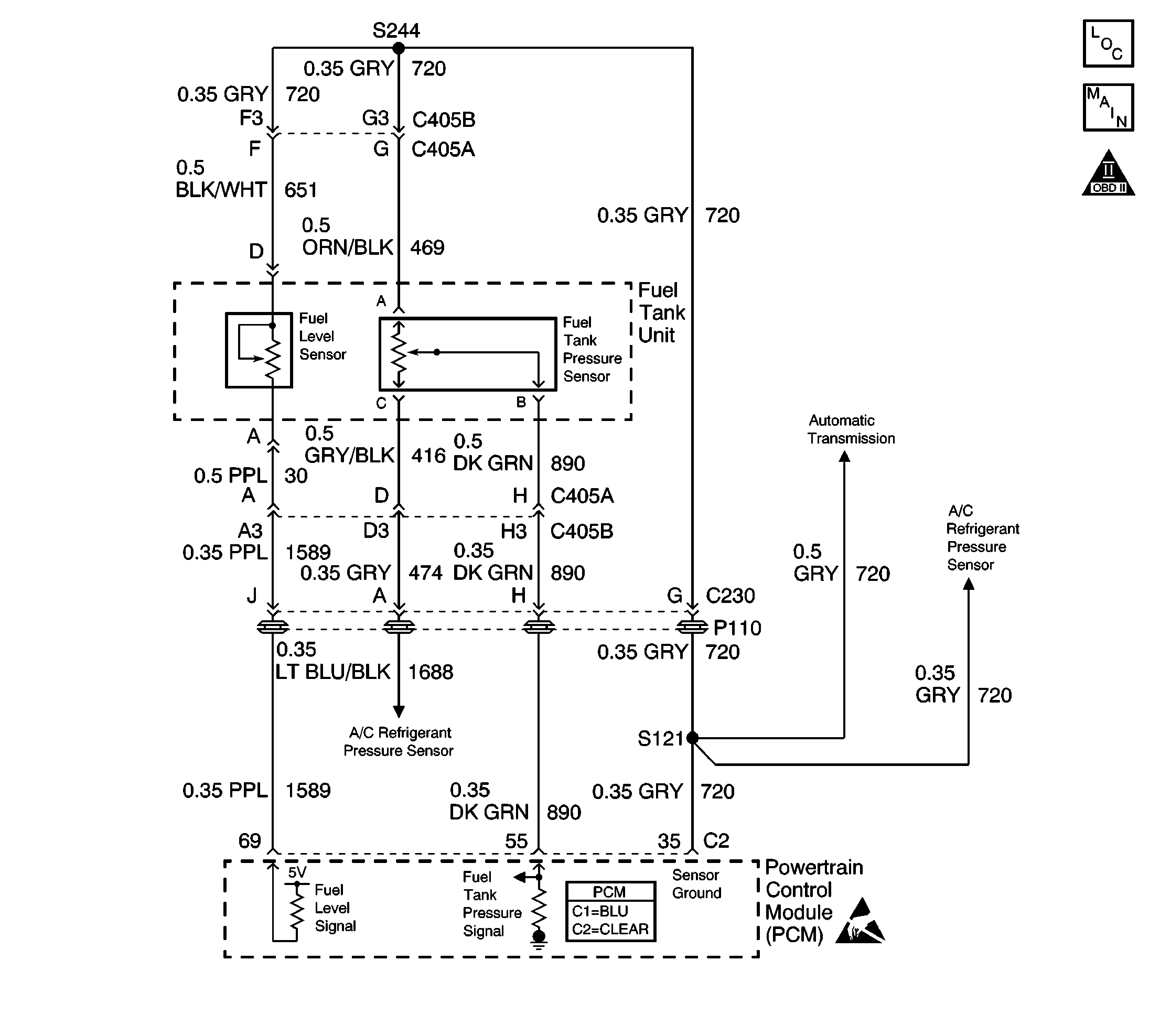SMU - Revised DTC P0462 Fuel Level Sensor Circuit Low Voltage Diagnostic Procedure

| Subject: | Revised DTC P0462 Fuel Level Sensor Circuit Low Voltage Diagnostic Procedure |
| Models: | 1999 Chevrolet Camaro |
| 1999 Pontiac Firebird |
| With 3.8L Engine |
This bulletin is being issued to revise the DTC P0462 Fuel Level Sensor Circuit Low Voltage diagnostic procedure in the Engine Controls - 3.8L sub-section of the Service Manual. Please replace the current information in the Service Manual with the following information.
The following information has been updated within SI2000. If you are using a paper version of this Service Manual, please make a reference to this bulletin on the affected page.

Circuit Description
The Fuel Level Sensor changes resistance based on fuel level. The Fuel Level Sensor has a signal circuit and a ground circuit. The PCM applies a voltage (about 5.0 volts) on the signal circuit to the sensor. The PCM monitors changes in this voltage caused by changes in the resistance of the sensor to determine fuel level.
When the fuel tank is full, the sensor resistance is high, and the PCM's signal voltage is only pulled down a small amount through the sensor to ground. Therefore, the PCM will sense a high signal voltage (fuel tank full). When the fuel tank is empty, the sensor resistance is low, and the signal voltage is pulled down a greater amount. This causes the PCM to sense a low signal voltage (fuel tank empty).
The PCM uses inputs from the Fuel Level Sensor to calculate the total fuel remaining in the fuel tank. This information is then sent to the fuel gauge.
This DTC sets when the PCM senses a signal voltage lower than the normal operating range of the sensor.
Conditions for Running the DTC
The ignition switch is in the RUN position.
Conditions for Setting the DTC
| • | The Fuel Level Sensor voltage is below 0.39 volts. |
| • | All conditions present for 6.0 minutes. |
Diagnostic Aids
The vehicle fuel gauge displays empty with this DTC set:
Using Freeze Frame and/or Failure Records data may aid in locating an intermittent condition. If you cannot duplicate the DTC, the information included in the Freeze Frame and/or Failure Records data can aid in determining how many miles since the DTC set. The Fail Counter and Pass Counter can also aid determining how many ignition cycles the diagnostic reported a pass and/or a fail. Operate the vehicle within the same freeze frame conditions (RPM, load, vehicle speed, temperature etc.) that you observed. This will isolate when the DTC failed.
Test Description
The numbers below refer to the step numbers on the Diagnostic Table.
Step | Action | Value(s) | Yes | No |
|---|---|---|---|---|
1 | Did you perform the Powertrain On-Board Diagnostic (OBD) System Check? | -- | Go to Powertrain On Board Diagnostic (OBD) System Check | |
Is the Fuel Level sensor above the specified value? | 0% | |||
3 |
Does the scan tool indicate that this diagnostic failed this ignition? | -- | Go to Diagnostic Aids | |
4 |
Is the Fuel Level sensor above the specified value? | 0% | ||
5 |
Was the Fuel Level sensor signal circuit grounded? | -- | ||
6 | Check for the fuel sender pigtail circuits shorted together or a short to ground. If any of the circuits are shorted together or a short to ground repair as necessary. Refer to Wiring Repairs in Body and Accessories. Was a problem found and repaired? | -- | ||
7 | Replace the Fuel Level sensor. Refer to Fuel Level Sensor Replacement. Is the action complete? | -- | -- | |
8 |
Did you find and correct the condition? | -- | ||
9 |
Important::
Replace the PCM. Is the action complete? | -- | -- | |
10 |
Does the scan tool indicate that this test ran and passed? | -- | ||
11 | Select the Capture Info option and the Review Info option using the scan tool. Does the scan tool display any DTCs that you have not diagnosed? | -- | Go to the applicable DTC | System OK |
